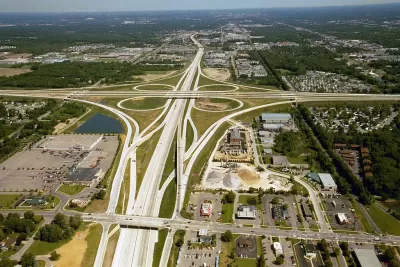Researchers from Denmark and Norway have looked at the accuracy of traffic forecasts for road projects. Their conclusion is that the forecasts systematically overestimate traffic growth rates and the resulting congestion effects.

Traffic forecasts often deliver influential input to the debate over whether or not to build new infrastructure to meet growing demand. The forecasts are important because they are used to calculate key performance indicators such as accident reductions and economic rate of return. As a result, they can play a decisive role in arguing for or against individual projects.
In a new article published in the scientific journal Transport Policy, two researchers from Aalborg University in Denmark and the Norwegian University of Life Sciences in Norway have compared the predicted and the actual traffic levels in business-as-usual scenarios used for Danish and English road projects. Their research shows that the traffic forecasts have predicted too high a growth rate in 7 out of 10 projects.
In the abstract, the researchers claim that "the main implication for planning practice is that the severity of future congestion problems is systematically overestimated. As a consequence, impact appraisals of road construction as a means of congestion relief appear overly beneficial." While it has not been possible to pinpoint the exact causes for the observed inaccuracy, the researchers argue that the most likely cause is that traffic is often assumed to continue growing regardless of available capacity. In reality, they claim, some people will find alternatives when congestion levels get too high, possibly choosing public transportation, moving closer to their workplace or finding a new job with a shorter commute time.
FULL STORY: Roads to nowhere: The accuracy of travel demand forecasts for do-nothing alternatives

Alabama: Trump Terminates Settlements for Black Communities Harmed By Raw Sewage
Trump deemed the landmark civil rights agreement “illegal DEI and environmental justice policy.”

Study: Maui’s Plan to Convert Vacation Rentals to Long-Term Housing Could Cause Nearly $1 Billion Economic Loss
The plan would reduce visitor accommodation by 25% resulting in 1,900 jobs lost.

Planetizen Federal Action Tracker
A weekly monitor of how Trump’s orders and actions are impacting planners and planning in America.

Restoring Northern India’s Himalayan ‘Water Temples’
Thousands of centuries-old buildings protect the region’s natural springs and serve as community wells and gathering places.

Milwaukee to Double Bike Share Stations
Bublr Bikes, one of the nation’s most successful, will add 500 new e-bikes to its system.

DC Extends Application Window for Outdoor Dining Permits
District restaurants will have until the end of November to apply, but businesses with permits in rush hour parking lanes must end operations on July 31.
Urban Design for Planners 1: Software Tools
This six-course series explores essential urban design concepts using open source software and equips planners with the tools they need to participate fully in the urban design process.
Planning for Universal Design
Learn the tools for implementing Universal Design in planning regulations.
Caltrans
Smith Gee Studio
Institute for Housing and Urban Development Studies (IHS)
City of Grandview
Harvard GSD Executive Education
Toledo-Lucas County Plan Commissions
Salt Lake City
NYU Wagner Graduate School of Public Service





























